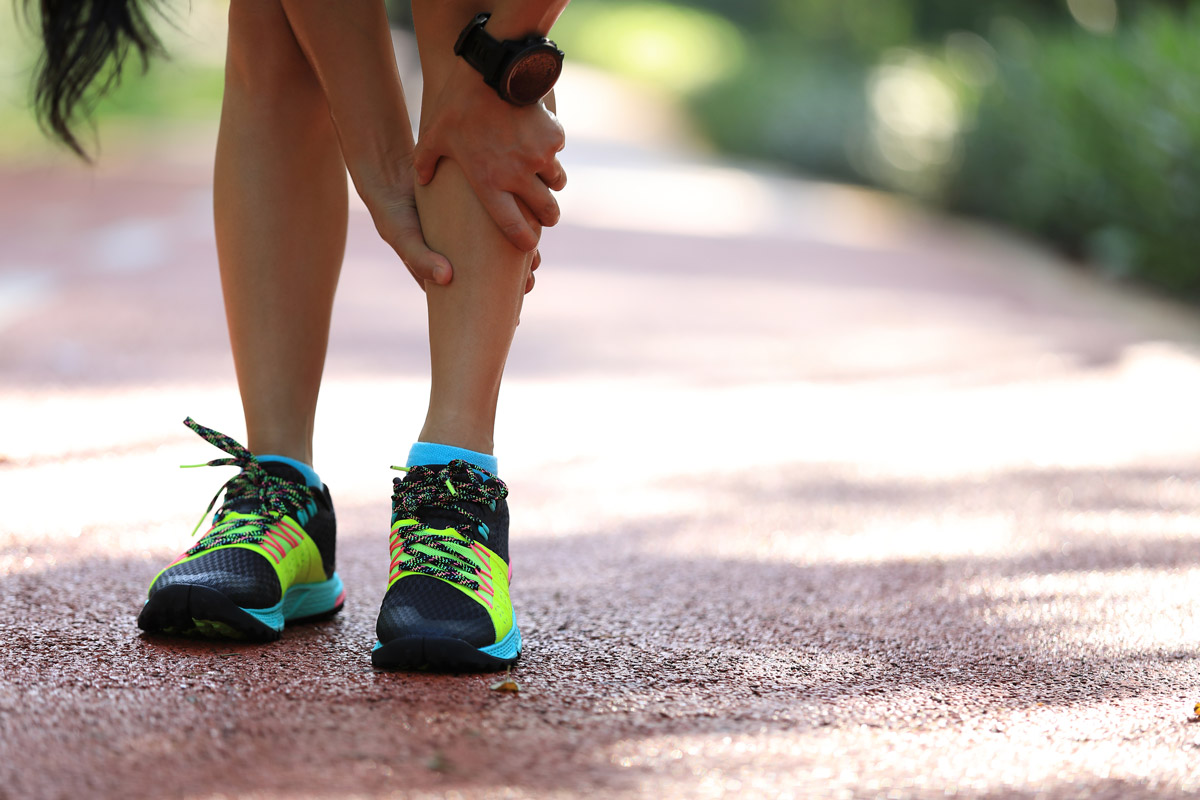Shin splints are a common overuse injury. This injury happens when the muscles and bones in your lower leg pull and become irritated. Athletes (especially runners), members of the military and people with osteoporosis are at a higher risk of developing shin splints. Shin splints can turn into stress fractures, so it’s best to take it easy while they heal.
Advertisement
Cleveland Clinic is a non-profit academic medical center. Advertising on our site helps support our mission. We do not endorse non-Cleveland Clinic products or services. Policy

Shin splints refers to pain in the front part of your lower legs (shins). This pain occurs when the muscles, tendons and tissue around your shin bone (tibia) become inflamed. Athletes often have shin pain because they put repeated stress on their shin bones, muscles and connective tissues. Healthcare providers sometimes call shin splints medial tibial stress syndrome.
Advertisement
Cleveland Clinic is a non-profit academic medical center. Advertising on our site helps support our mission. We do not endorse non-Cleveland Clinic products or services. Policy
Shin splints are a very common overuse injury. With rest and ice, most people recover from shin splints without any long-term health problems. However, if left untreated, shin splints do have the potential to develop into a tibial stress fracture.
The most common symptom of shin splints is lower leg pain. The pain can range from mild to severe, and your shin bone may be tender to the touch. Mild swelling may occur, as well.
Pain from shin splints can:
Shin splints develop from repeated stress to your shin bone by the pulling and tugging of the muscles and connective tissues in your lower leg. Frequent, repetitive pressure from running and jumping can cause your shin bone to become inflamed (swollen or irritated) and weakened. When the bone doesn’t have time to heal, the damage can get worse and cause severe pain. Such repeated stress can happen for many reasons, including starting a new exercise routine or increasing your level of physical activity too quickly.
Advertisement
Although anyone can get shin splints, certain people have a higher chance of developing the condition. Groups with a higher risk of shin splints include:
Complications from shin splints are rare. If you continue to run or play sports without letting your legs heal, shin splints can progress into a stress fracture. A stress fracture occurs when little cracks form in your bone. To treat a stress fracture, healthcare providers often recommend using crutches or wearing a walking boot until the bones heal.
Healthcare providers diagnose shin splints by learning your medical history and doing a physical exam. Your provider will look at how you walk and examine your lower leg, ankle and foot. A complete exam will involve moving your ankle and foot around and feeling for tenderness along the bone. Standing on the painful leg or hopping on that leg may help to diagnose shin splints or a stress fracture.
To rule out a stress fracture, your provider will first order an X-ray, although stress fractures aren’t seen in about two-thirds of plain X-rays. Therefore, if your provider is concerned, they may then order a magnetic resonance imaging (MRI) scan or bone scan. These tests allow your provider to see if the shin splint has become a stress fracture because they pick up the injury before an X-ray
To relieve your symptoms, you need to give your bones and muscles time to heal. Shin splints treatment usually includes a combination of:
Advertisement
Side effects from NSAIDs are rare but can occur. They usually happen only after you’ve taken the medication for a long time. You should use the lowest dose for the shortest time to minimize side effects.
Side effects of NSAIDs can include:
Most people who have shin splints recover after taking time off from sports and activities. Shin splints often go away once your legs have had time to heal, usually in three to four weeks. Most people can resume an exercise program after their legs have healed. It takes longer to recover from a stress fracture, so it’s best to treat shin splints early.
Shin splints aren’t permanent. You should be able to ease pain from shin splints with rest, changing the amount of exercise you’re doing and making sure to wear supportive footwear. If your shin splints don’t go away over a long period of time, see your healthcare provider. You may need to be tested for stress fractures or other conditions that could be causing the pain. Preventing shin splints from returning may require an evaluation of your footwear, stretching and flexibility.
Advertisement
While you may not always be able to prevent shin splints, you can reduce your risk of developing the condition or making it worse. To lower your risk, you can:
Advertisement
You should call your healthcare provider if your shin pain is severe or doesn’t go away after a few weeks of rest. Call your provider if your legs are very swollen, red or painful. These symptoms could mean you have an infection or another condition.
Questions you may want to ask your provider include:
You’re running along the tree-lined path in the park as you always do. Wind in your hair, tunes in your ears, pushing yourself to go just a little bit further. Suddenly, you feel a sharp pain in your leg — you may have a shin splint. While inconvenient, shin splints usually aren’t serious. But you should take it easy for a while until they heal. To rule out the possibility of a stress fracture, see your healthcare provider if the pain continues.
If an injury puts you on the bench, you want experts by your side. Cleveland Clinic’s sports medicine specialists can get you back in the game.

Last reviewed on 06/14/2023.
Learn more about the Health Library and our editorial process.